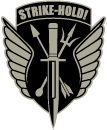Dedicated COIN Air Wings For The USAF?
Source: The Blog – theweeklystandard.com
QDR to Recommend Dedicated COIN Air Wings
By Christian Lowe
A top Pentagon official told a small group of defense reporters this morning (July 23) that the upcoming Quadrennial Defence Review (QDR) will is likely to propose the formation of an aviation cadre devoted solely to irregular warfare.
The Pentagon’s guru for special operations and low intensity conflict, the renowned Michael Vickers, told us that he believes a light strike, light reconnaissance aircraft would be useful to troops in an unconventional fight.
“That’s one of the issues that this QDR is looking at about how to create these sort of irregular warfare air units — should we do that, number one, because nothing has been decided — then what that mix might be. But it might not reside in the special operations forces, it might reside in the general purpose forces as sort of a counterinsurgency capability,” Vickers said.
I’ve heard rumblings that both the Air Force and Navy are looking to the Super Tucano for their primary ground attack bird. That’s an excellent choice for a variety of reasons, not the least of which being the ST’s long loiter time and impressive array of machine guns, a 20mm cannon, and rocket pods. It’s also a proven in the field. A Columbian Air Force Super Tucano dropped the bomb that killed FARC #2 Raul Reyes during a cross-border raid into Ecuador last year.
Additionally, the Air Force has fielded a new squadron of MC-12 ISTAR birds in Iraq, an intelligent solution to a long standing capabilities gap between ground pounders and the overtasked UAV fleet. Key to both the MC-12 and (proposed) Super Tucano acquisitions is that they’re cheap enough to be purchased by second and third world allies plagued by indigenous insurgencies, easing the tricky task of standing up friendly foreign air forces.
This is all part of a smart new COIN v2.0 campaign sweeping the Pentagon, and evidence that the US Air Force is finally getting serious about counter-insurgency.
EMB-314 Super Tocano
The EMB-314 Super Tucano is an enhanced version, with faster speed and higher altitude, of the EMB-312 Tucano trainer aircraft which is operational in the Air Forces of 17 countries. The prototype of the Super Tucano first flew in 1992. Both Tucano and Super Tucano have been developed and built by Embraer of Brazil.
The main missions of the aircraft, in addition to basic and advanced pilot training, are border patrol and counter-insurgency operations.
The flight envelope of the aircraft is +7g and -3.5g. The aircraft’s small size, small visual and radar signatures, together with high speed and agility give the aircraft high survivability. Additional survivability features include armour protection and critical systems redundancy.
Cockpit
The all-glass cockpit is fully night vision goggle compatible. Brazilian AF ALX aircraft are equipped with avionics systems from Elbit Systems Ltd of Haifa, Israel, including a head-up display (HUD), advanced mission computer, navigation system and two 6in x 8in colour liquid crystal multi-function displays.
The pilot is protected with Kevlar armour and provided with a zero/zero ejection seat. The clamshell canopy, hinged at the front and rear and electrically activated, is fitted with a de-icing system and features a windshield capable of withstanding, at 300kt, the impact of a 4lb bird. A Northrop Grumman onboard oxygen generation system (OBOGS) is installed.

Weapons
The aircraft is fitted with two central mission computers. The integrated weapon system includes software for weapon aiming, weapon management, mission planning and mission rehearsal. Onboard recording is used for post mission analysis.
The aircraft has five hardpoints for carrying weapons, and is capable of carrying a maximum external load of 1,500kg. The aircraft is armed with two wing-mounted 12.7mm machine guns with a rate of fire of 1,100 rounds a minute and is capable of carrying general-purpose bombs and guided air-to-air and air-to-ground missiles. Brazilian AF aircraft will be armed with the MAA-1 Piranha short-range infrared guided air-to-air missile from Orbita.

The two seat AT-29 is fitted with a forward-looking infrared AN/AAQ-22 SAFIRE turret on the underside of the fuselage. The SAFIRE thermal imaging system supplied by FLIR Systems is for targeting, navigation and target tracking. The system allows the aircraft to carry out night surveillance and attack missions.
Navigation
The aircraft is equipped with an advanced laser inertial navigation and attack system, a global positioning system (GPS) and a traffic alerting and collision avoidance system (TCAS).
 (information and photos from airforce-technology.com)
(information and photos from airforce-technology.com)
MC12W / Project Liberty
The MC-12 is a USAF intelligence, surveillance and reconnaissance (ISR) platform and Air Combat Command (ACC) asset, which was fielded under an ambitious timeline in 2008 and 2009 to meet ground support ISR requirements in the U.S. Central Command (USCENTCOM) Area of Responsibility for Operations Enduring Freedom (OEF) and Iraqi Freedom (OIF). Known as Project Liberty, the MC-12W platform was created in response to Defense Secretary Robert Gates’ initiative to better support warfighters on the ground with increased ISR in theater.
The USAF plans to procure 38 MC-12W aircraft.

(information and photograph from Wikipedia.com)
About this entry
You’re currently reading “Dedicated COIN Air Wings For The USAF?,” an entry on Strike - Hold!
- Published:
- 27/07/2009 / 13:10
- Category:
- Air Support, Doctrine, Tactics, Training
- Tags:

1 Comment
Jump to comment form | comment rss [?] | trackback uri [?]